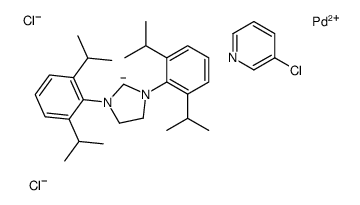| Structure | Name/CAS No. | Articles |
|---|---|---|
 |
PEPPSI-SIPr catalyst
CAS:927706-57-8 |
|
![dichloro-[1,3-bis(diisopropylphenyl)imidazolylidene]-(3-chloropyridyl)palladium(ii) Structure](https://image.chemsrc.com/caspic/407/905459-27-0.png) |
dichloro-[1,3-bis(diisopropylphenyl)imidazolylidene]-(3-chloropyridyl)palladium(ii)
CAS:905459-27-0 |